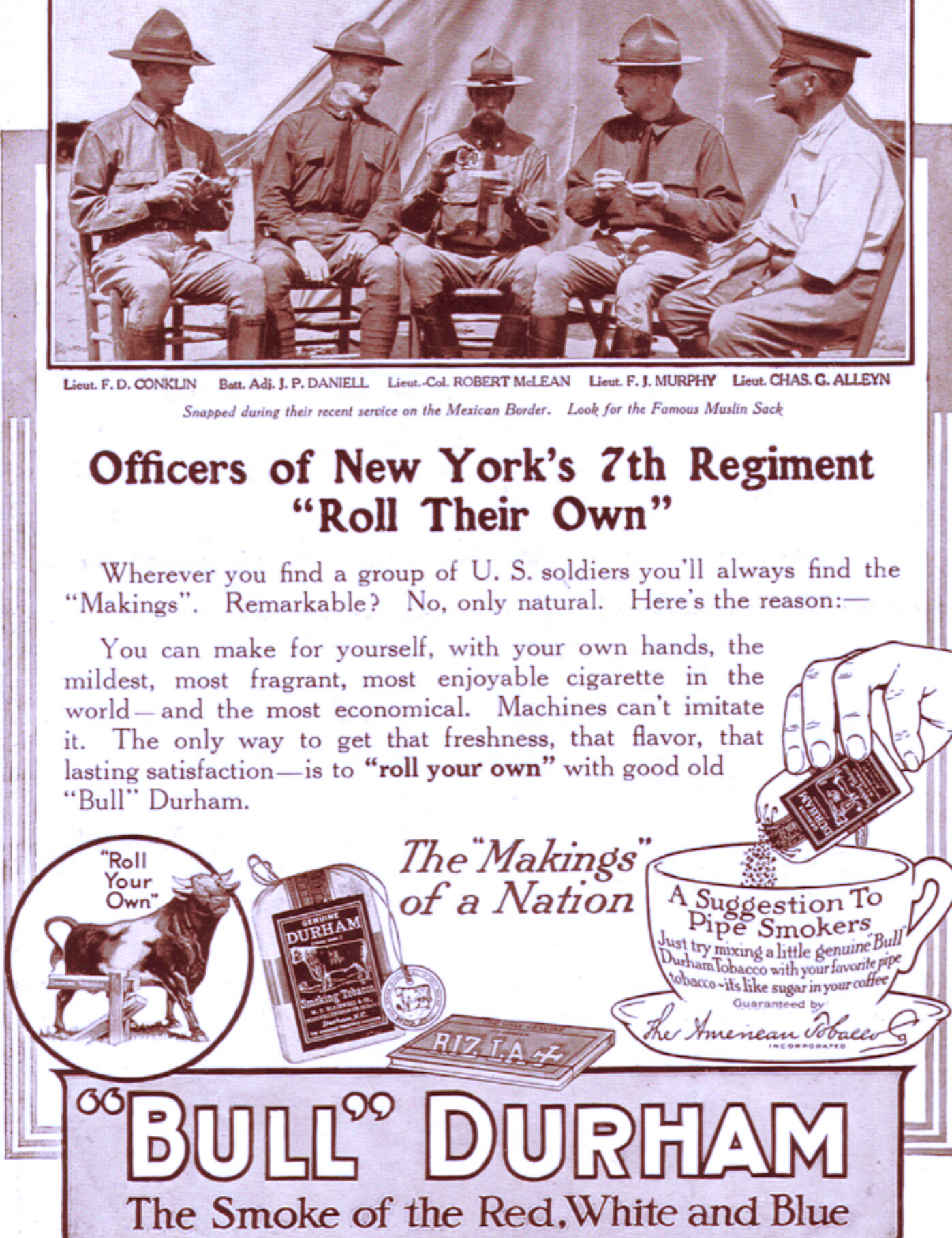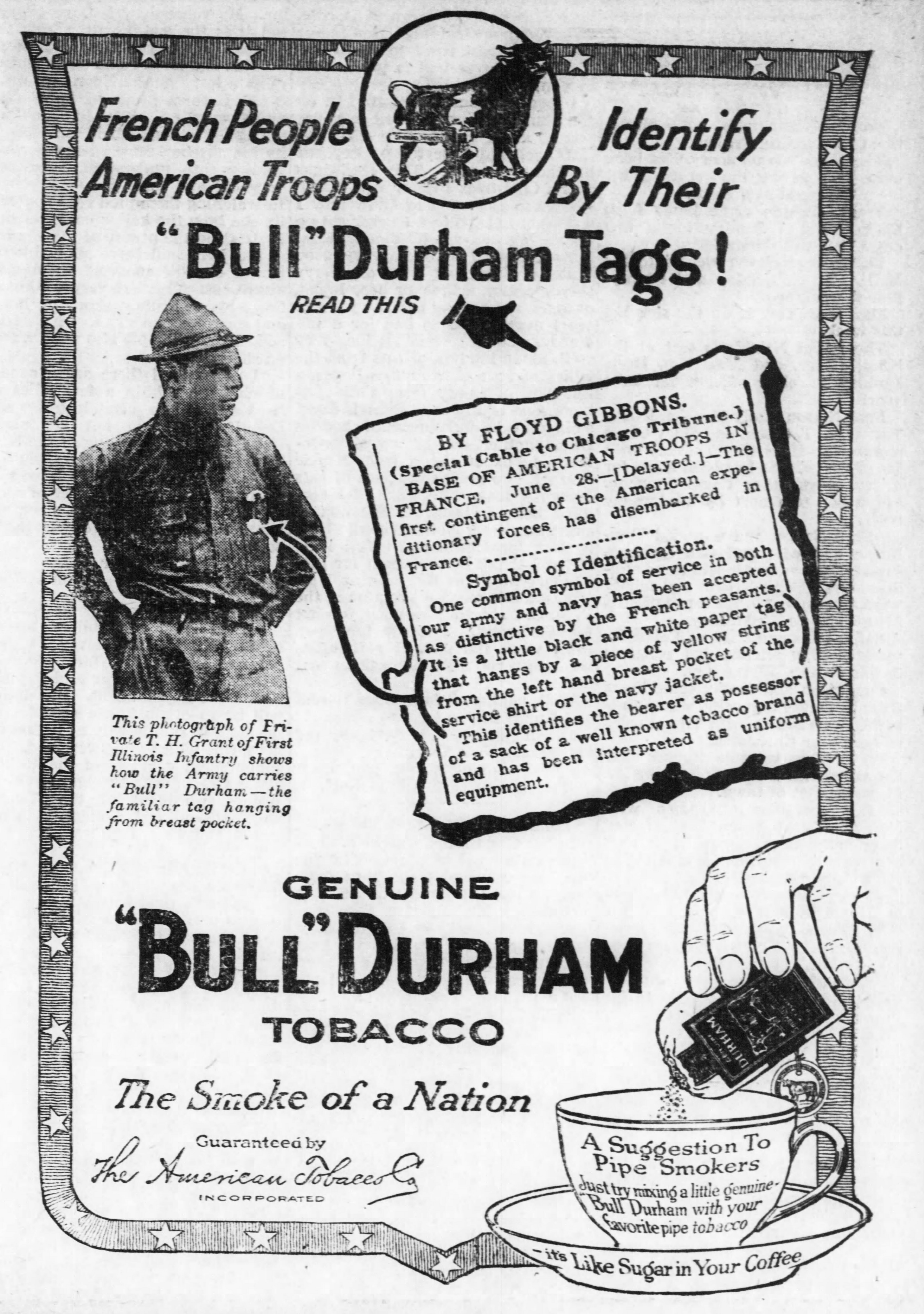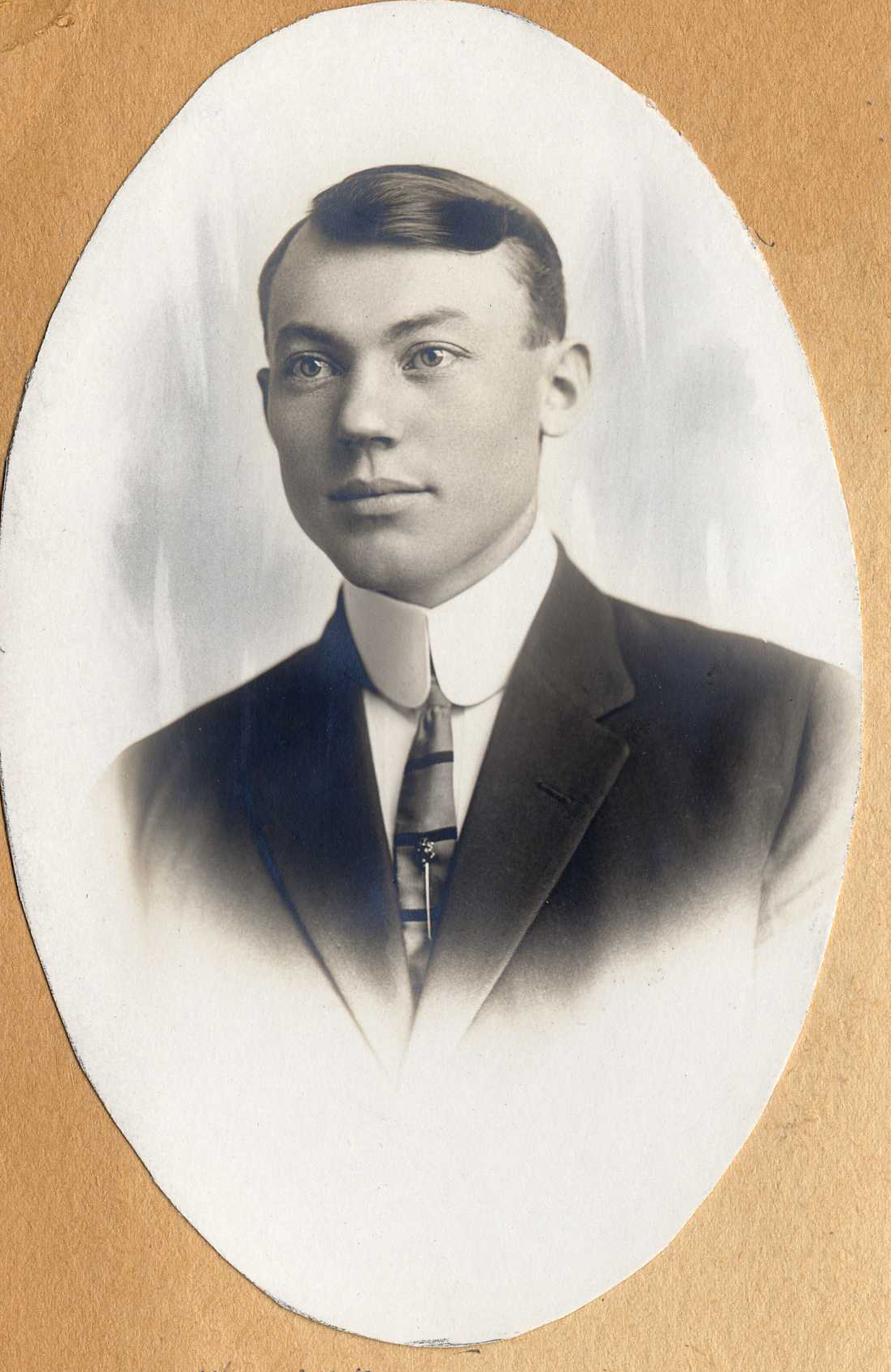
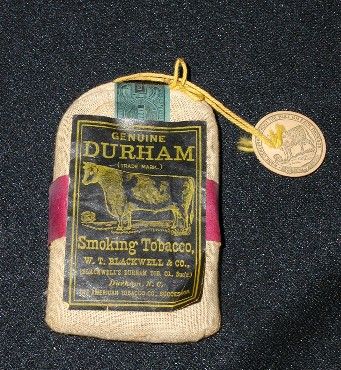
Wilbur Baxter, Kinsley High School, Class of 1912
100 years ago, Wilbur Baxter, had just started serving in an evacuation hospital in France. The Kinsley Graphic contained this short item: “Wilbur Baxter has written his family that he is very well, and that if they are thinking of sending him anything to please put in a little ‘Bull Durham’. His sisters answered the ‘S.O.S.’ by return mail.” (February 14, 1918)
My curiosity was aroused by this item and the fact that Bull Durham Smoking Tobacco ads had started appearing in December in both the Kinsley Graphic and Kinsley Mercury. At this time, Bull Durham was owned by the American Tobacco Company. The familiar Durham bull image and the wide circulation of advertisements in newspapers and magazine had made “Bull Durham” a household name long before World War I.
Bull Durham Smoking Tobacco was a loose-leaf tobacco, not a ready-made cigarette. Those had been around since 1876, but men in the west considered them too expensive and a little prissy. Even before the U.S. entered WWI, the American Tobacco Company targeted prospective smokers in a 1916 magazine advertisement by showing army officers deployed along the U.S.-Mexican border taking time to “roll their own”. The accompanying caption reads, “Wherever you find a group of US. Soldiers you’ll always find the ‘Makings.’”
Bull Durham was sold in a cotton bag with a drawstring that had a tag attached to it. This tag was highlighted in a January 3 advertisement that quoted a cable written by Floyd Gibbons to the Chicago Tribune from the base of American Troops in France on June 28, 1917.
“The French People recognize the American Troops by their “Bull” Durham Tags.
One common symbol of service in both the army and navy has been accepted as distinctive by the French peasants. It is a little black and white paper tag which hangs by a piece of yellow string from the left hand breast pocket of the service shirt or the navy jacket. This identifies the bearer as possessor of a sack of a well known tobacco brand and has been interpreted as uniform equipment.
(An interesting side note about these bags of tobacco is they were typically tagged by home workers as a true ‘cottage industry’. Women and children, sitting on their front porches or in the kitchens, would be paid to tag thousands of bags for the tobacco company.)
Later, the Bull Durham advertising headline on January 31 was, “Send Them Away With a Smile”. It asserts that “Bull” Durham is “The Smoke of a Nation ….Note the sacks of ‘Bull’ Durham in their pockets. That’s why they were going away with a smile.”
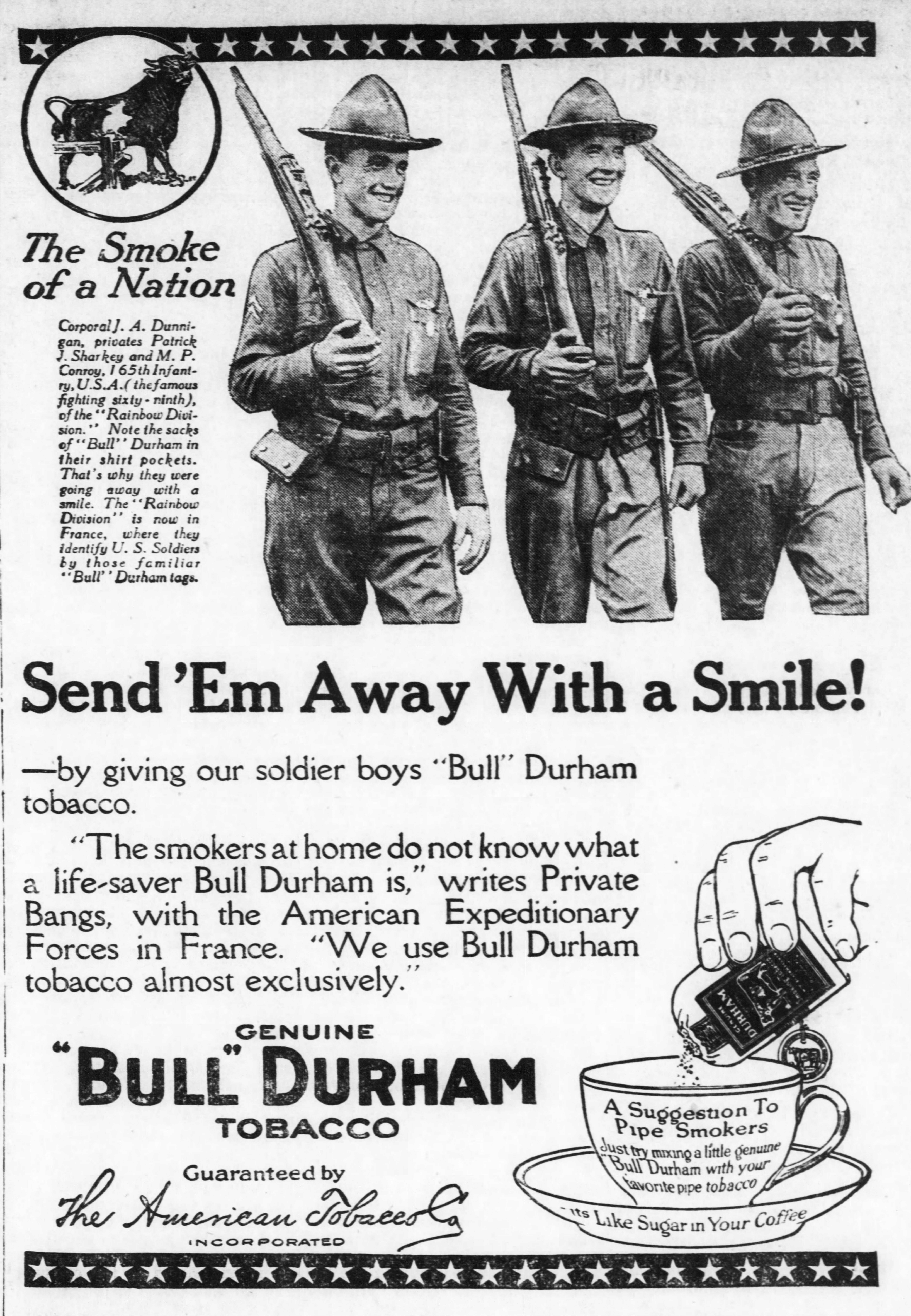
Bull Durham was branded as “The Smoke of the Red, White, and Blue.” The American Tobacco Company sold all of its production to the War Department to satisfy U.S. troops’ craving for tobacco “over there”. Bull Durham was included in the rations given to soldiers on the front lines. So great was the urge to smoke to relieve the boredom and tension of war in the trenches General Pershing himself was said to have remarked that cigarettes were more important to our soldiers than bullets.
Bull Durham made its last hurrah in 1918, when the company announced that, since it was sending all its Bull Durham tobacco to U.S. soldiers in World War I, it would suspend advertising. And sure enough, the Bull Durham advertisements disappeared from the Graphic and Mercury after February, 1918.

